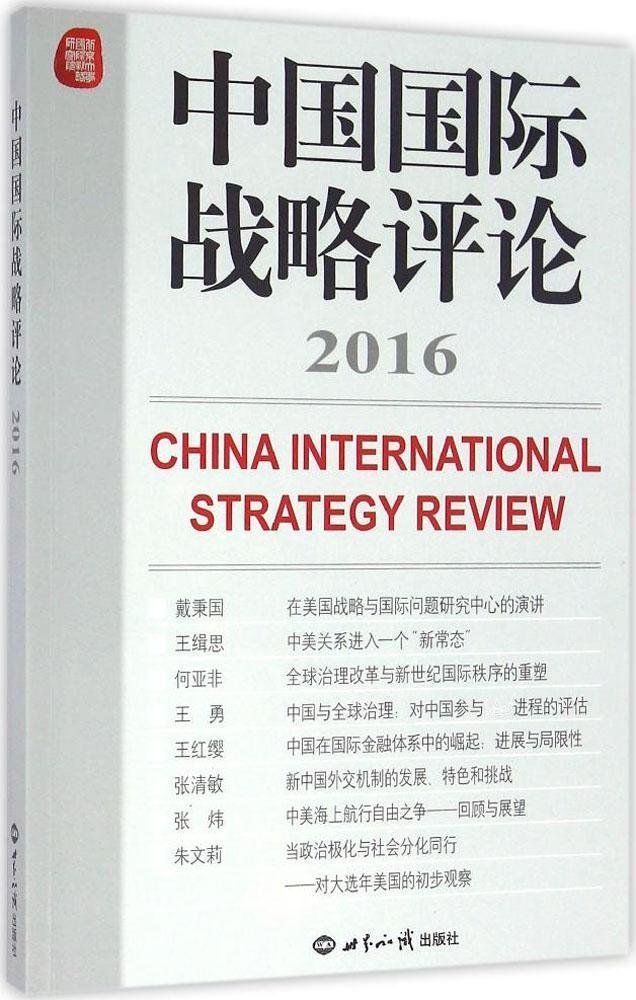Scalene Perspectives, Isosceles Ideas and Equilateral Dependence: The U.S.-Europe-China “Strategic Triangle” and Transatlantic Policy
Andrew S. Erickson and Austin M. Strange, “Scalene Perspectives, Isosceles Ideas and Equilateral Dependence: The U.S.-Europe-China ‘Strategic Triangle’ and Transatlantic Policy,” China International Strategy Review 2016: 337–61.
Click here to read the online version.
The United States (US), European Union (EU) and People’s Republic of China (PRC) are sometimes viewed as a “strategic triangle”, with economic, political, and security dimensions. Within the triangle, debate persists regarding whether Western powers can and should build on shared core values to achieve mutually beneficial strategic outcomes. Deep interdependence among all three sides makes it difficult for a given side to directly oppose another on central economic, political and security issues. Moreover, every side possesses different preferences on various strategic issues. In other words, both the triangle’s size and complexity make direct coordination on major issues difficult for any two sides. As such, transatlantic coordination designed to achieve mutually beneficial outcomes within the triangle will likely be limited to peripheral issues such as non-traditional security challenges. Less direct engagement could encourage constructive Chinese participation on certain international security issues.
Key Words: Strategic triangle, China, European Union, transatlantic relations, nontraditional security
I. EQUILATERAL DEPENDENCE: ECONOMICS, POLITICS AND SECURITY
David Shambaugh first articulated a ‘strategic triangle’ to describe contemporary United States-Europe-China strategic relations in 2005. At the time, the rift between Washington and Brussels over lifting the EU’s arms embargo to China exemplified transatlantic differences in perceptions, politics and policies concerning China and Asia-Pacific security issues. Then and now, evolving trilateral relations between US, EU and China exist not as an isolated triangle but as a major link in a perpetually changing network of international relationships. While it is just one of many crucial trilateral relationships in contemporary international politics, the US-EU-China strategic triangle is perhaps the largest and most significant—yet has received relatively little systematic attention.
The triangle’s enduring share of world economic, political and military power demonstrates its significance. As a recent report by the Centre for European Policy Studies forecasts, in 2030 the US, EU and China, referred to as the “G3,” are likely to hold a combined 55 per cent stake in the world economy, a figure closely approximately their present share. In addition, the triangle has persistently accounted for more than half of the world’s defense spending, and its members wield immense international political power.
Given China’s partial economic and military—but not political—convergence with the West, as well as the instability arguably generated by tripolar international systems in modern history, it is important to study trilateral relations among the US, Europe and China. As others have pointed out, the emergence of the triangle has, together with globalization, partially transformed the post-Cold War international system into a multinodal order: Global prosperity across a range of sectors relies heavily on cooperative relations among the three sides, even though each side has its own leverage to check actions of the other two. For organizational purposes, we briefly survey the triangle in terms of economics, politics and security. … … …
CHINESE-LANGUAGE VERSION:
安德鲁 S. 埃里克森, 奥斯汀 M. 斯特兰奇 [Andrew S. Erickson and Austin M. Strange], “等边依赖、不等边视角和等腰理念: 美国—欧盟–中国 ‘战略三角’ 和跨大西洋政策” [Scalene Perspectives, Isosceles Ideas and Equilateral Dependence: The U.S.-Europe-China ‘Strategic Triangle’ and Transatlantic Policy], 中国国际战略评论2016 [China International Strategy Review 2016]: 290–305.
Click here to read the online version.
内容提要: 美国、欧盟和中国有时被视为“战略三角”。这个“战略三角” 存在经济、政治以及安全等不同维度。针对这个三角,有一个一直以来的争论, 即西方国家能否以及是否应该在其共同核心价值观的基础上,赢取对各方有利的 战略成果。这三方之间深度的相互依赖使得任何一方在核心的经济、政治和安全 问题上都很难直接反对另一方。此外,每一方都在不同的战略问题上有不同偏 好。换句话说,这个战略三角的规模和复杂性使任何两方在重要问题上都很难进 行直接协作。正因为如此,旨在惠及双方的跨大西洋协作也很有可能仅仅局限于 非传统安全挑战等边缘问题。相对间接的接触可能可以鼓励中国建设性地参与某 些国际安全议题。
关键词: 战略三角 中国 欧盟 跨大西洋关系 非传统安全
一、等边依赖: 经济、政治和安全
在2005年,沈大伟 (David Shambaugh) 首次明确使用“战略三角”来描述 当代美国—欧洲—中国的战略关系。1 那时,华盛顿和布鲁塞尔在欧盟取消对华武器禁运上的不和体现了大西洋两岸在中国和亚太安全问题上的不同认知、政治和政策。那时和现在,美国、欧盟和中国不断变化的三角关系都不单单是一个孤立的三角关系,而是永远变化的国际关系网络的一个主要环节。尽管只是当代国际政治中许多重要三角关系中的一个,但是美国—欧盟—中国的战略三角可能是最大和最为重要的。然而,它尚未得到系统性关注。
这个三角在世界经济、政治和军事力量方面所持续占有的份额显示了它的重要性。据欧洲政策研究中心(Centre for European Policy Studies)一份最近的报告预测,到2030年,美国、欧盟和中国(被称为“G3”)有可能合占世界经济的55%,这个比例几乎与它们现在的份额持平。另外,该三角的防务开支一直占全世界的一半以上,其成员能发挥巨大的国际政治影响力。
考虑到中国部分地与西方在经济和军事上(政治上除外)的趋同,以及在现代历史中一般也认为三极国际体系产生不稳定性,研究美国、欧洲和中国的三角关系很重要。正如他人所言,这个三角的出现与全球化共同将后冷战国际体系部分地转化为多节点秩序:各方面的全球繁荣高度依赖这三方间的合作关系,尽管每一方都有阻碍其他两方行动的杠杆手段。5出于文章结构的考虑,我们从经济、政治和安全方面简单地考察这个三角关系。 。。。






































